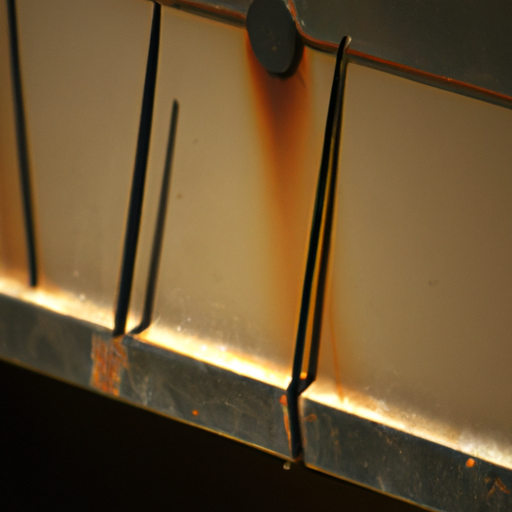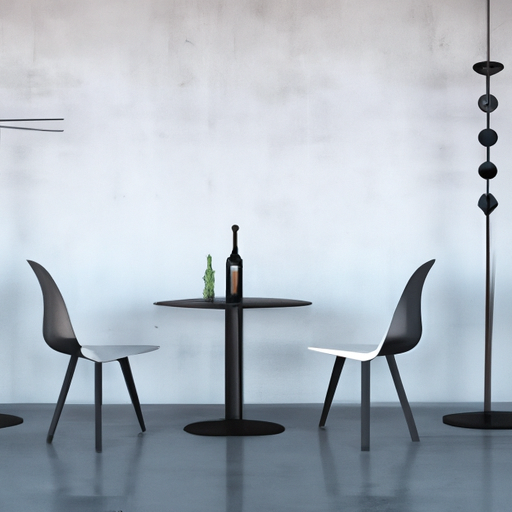This comprehensive guide provides in-depth strategies on how to efficiently clean metal furniture, focusing on rust removal and maintenance. It offers practical advice and effective methods to help you restore the shine and extend the lifespan of your furniture.
“Why Is Rust Removal Important for Metal Furniture?”,
Rust removal is crucial for maintaining the longevity and aesthetic appeal of metal furniture. Over time, metal furniture is susceptible to rust due to exposure to moisture, humidity, and other environmental factors. Rust not only compromises the structural integrity of the furniture but also diminishes its visual appeal.
First, rust weakens the metal, making it more prone to damage and breakage. This can pose a safety risk, especially for furniture that supports weight or has moving parts. Regular rust removal helps to preserve the strength and stability of the furniture, ensuring its durability and safety for users.
Secondly, rust detracts from the visual appeal of metal furniture. Rust stains and corrosion make the furniture appear old, worn-out, and neglected. This is particularly undesirable for metal furniture used in professional settings such as offices, hotels, or restaurants where aesthetics play a significant role in creating a positive impression on clients and guests.
Furthermore, rust can spread and contaminate surrounding areas. If left untreated, rust particles can transfer onto other surfaces, such as floors or walls, leading to additional cleaning and maintenance challenges. By promptly removing rust, you can prevent further damage and maintain a clean and hygienic environment.
Finally, removing rust from metal furniture helps to extend its lifespan. By regularly cleaning and maintaining metal furniture, you can prevent the formation and progression of rust, thereby preserving its functionality and appearance. This not only saves you the cost of replacing furniture but also reduces waste and contributes to a more sustainable approach to furnishing.
“An image showing rusty metal furniture and its negative impact.”,
“What are the Effective Techniques for Rust Removal?”,
There are several effective techniques for rust removal from metal furniture. These techniques can vary depending on the severity of the rust and the type of metal. Here are three commonly used methods:
- 1. Mechanical Methods:
One of the most popular mechanical methods for rust removal is using sandpaper or a wire brush. This technique involves manually scrubbing the rusted areas to remove the corrosion. Start with a coarse-grit sandpaper or wire brush to remove the bulk of the rust, and then switch to a finer grit to smooth the surface. Remember to wear protective gloves and eyewear during this process to avoid any injuries. - 2. Chemical Methods:
Chemical rust removers are widely available and can be very effective. These products typically contain acid-based solutions that dissolve rust. Before using any chemical rust remover, make sure to read and follow the instructions carefully. Apply the solution to the rusted areas and let it sit for the recommended time. Then, scrub the area with a brush or sponge to remove the dissolved rust. Rinse thoroughly with water and dry the furniture completely. - 3. Electrolysis:
Electrolysis is a more advanced technique that is highly effective for removing rust from metal furniture. This method involves creating an electrolyte solution, usually a mixture of water and baking soda, and immersing the rusted piece of furniture into it. Then, a sacrificial electrode, such as a piece of scrap metal, is connected to the positive terminal of a power source, while the rusted furniture is connected to the negative terminal. As the electric current flows through the solution, it causes the rust to transfer from the furniture to the sacrificial electrode. This process can take several hours or even days, depending on the extent of the rust.
“How Can You Maintain Your Metal Furniture to Prevent Rust?”,
To prevent rust and maintain the longevity of your metal furniture, there are several essential maintenance practices to follow:
- 1. Regular Cleaning:
Clean your metal furniture regularly to remove dirt, dust, and other debris that can contribute to rust formation. Use a mild detergent or soapy water and a soft cloth or sponge to gently clean the surface. Avoid using abrasive cleaners or tools that can scratch the metal. - 2. Dry thoroughly:
After cleaning, make sure to dry your metal furniture thoroughly. Moisture is a key factor in rust formation, so ensure that no water or moisture is left on the surface or in the crevices. Use a clean, dry cloth or towel to wipe down the furniture and allow it to air dry completely before using or storing it. - 3. Apply Protective Coatings:
Applying a protective coating to your metal furniture can provide an extra layer of defense against rust. There are various options available, such as paint, clear sealants, or specific metal protectants. Choose a coating that is suitable for your metal type and follow the manufacturer’s instructions for application. Regularly inspect the coating for any signs of wear or damage and reapply as needed. - 4. Store Indoors or Use Covers:
Whenever possible, store your metal furniture indoors during periods of extended non-use, such as during the winter or rainy seasons. If indoor storage is not feasible, consider using weather-resistant covers specifically designed for outdoor furniture. These covers will help protect your metal furniture from exposure to moisture, sun, and other elements that can accelerate rust formation. - 5. Check for signs of rust:
Regularly inspect your metal furniture for any signs of rust, even if you have taken preventive measures. Catching rust early on allows for easier removal and prevents further damage. If you notice any rust spots, promptly address them using the appropriate rust removal techniques mentioned earlier.
“An image showcasing well-maintained metal furniture.”,
“Understanding the Role of Protective Coatings: Are they Necessary?”
Protective coatings play a crucial role in preventing rust and maintaining the appearance of your metal furniture. While not always necessary, they offer an extra layer of defense against moisture, oxidation, and other factors that can lead to rust formation.
One of the primary benefits of protective coatings is their ability to create a barrier between the metal surface and the elements. This barrier helps to prevent water and other corrosive substances from coming into direct contact with the metal, reducing the risk of rust.
In addition to rust prevention, protective coatings can also enhance the aesthetic appeal of your metal furniture. They can provide a smooth, even finish and can be customized to match your desired look. Whether you prefer a glossy or matte appearance, there are various coating options available to suit your preferences.
Furthermore, protective coatings can also make cleaning and maintenance easier. They create a sealed surface that is resistant to dirt, grime, and stains, making it easier to wipe clean and maintain the overall cleanliness of your metal furniture.
However, it is important to note that not all metal furniture requires protective coatings. Some metals, such as stainless steel or aluminum, naturally form a protective oxide layer that helps prevent rust. In such cases, additional coatings may not be necessary.
Cleaning Metal Furniture: Rust Removal and Maintenance:
| Task | Method | Time | Cost |
|---|---|---|---|
| Rust Removal | Sandblasting | 2 Hours | Moderate |
| Rust Prevention | Polishing and Waxing | 1 Hour | Low |
| Seasonal Maintenance | Cleaning and Wiping | 30 Minutes | Low |
| Frequent Maintenance | Vacuuming and Wiping | 15 minutes | Low |
In conclusion, keeping metal furniture clean and rust-free is crucial for its longevity. By following the methods outlined in this guide, you’ll be able to effectively remove rust and maintain your furniture’s pristine condition. Remember, prevention is always better than cure; Regular maintenance is key.



